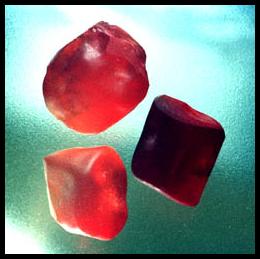Home | About Me | Jewelry Designs | Gemstones | Mineral Specimens | Mine Info | Orders | FAQs | Contact | Links |
||
 |
||||
Fire Opal from San Juan del Rio, the Queretaro Region, Central Mexico |
||||
 |
||||||
Rough Fire Opal Nodules from San Juan del Rio, Mexico |
||||||
There are many varieties of opal, but the best known is refered to as "precious opal." Precious opal shows beautiful flashes of varied color ("Play of color") that result from the refraction of light by billions of ultramicroscopic silica spheres organized in layers. The body color of precious opal is commonly white, but hues from clear, to yellow, to red, to black also occur. Opal that shows no play of color, but posesses fine clarity and an exquisite cherry red color is referred to as "Fire Opal." Opal is an amorphous gem material that consists of billions of microscopic cristobolite (Silica) spheres pack in an orderly fashion. The voids between the spheres contain varying amounts of water (As much as 30% by weight). Some crystal-clear fire opal will gradually turn opaque if it loses internal water (This may happen in as little as a few days). Much fire opal will maintain its' crystal clarity indefinitely. It is the gem cutter's job to identify mines and miners that produce fire opal that will not turn cloudy. Rough and faceted fire opals can be left in a dry condition for several months to assess their propensity to lose water and turn cloudy. Reputable gem dealers offer a refund or replacement policy to compensate a customer in the event that a fire opal changes in clarity. Stable fire opal rough produces exquistie gemstones that will last forever (Just don't bang that opal ring against the car door!). |
||